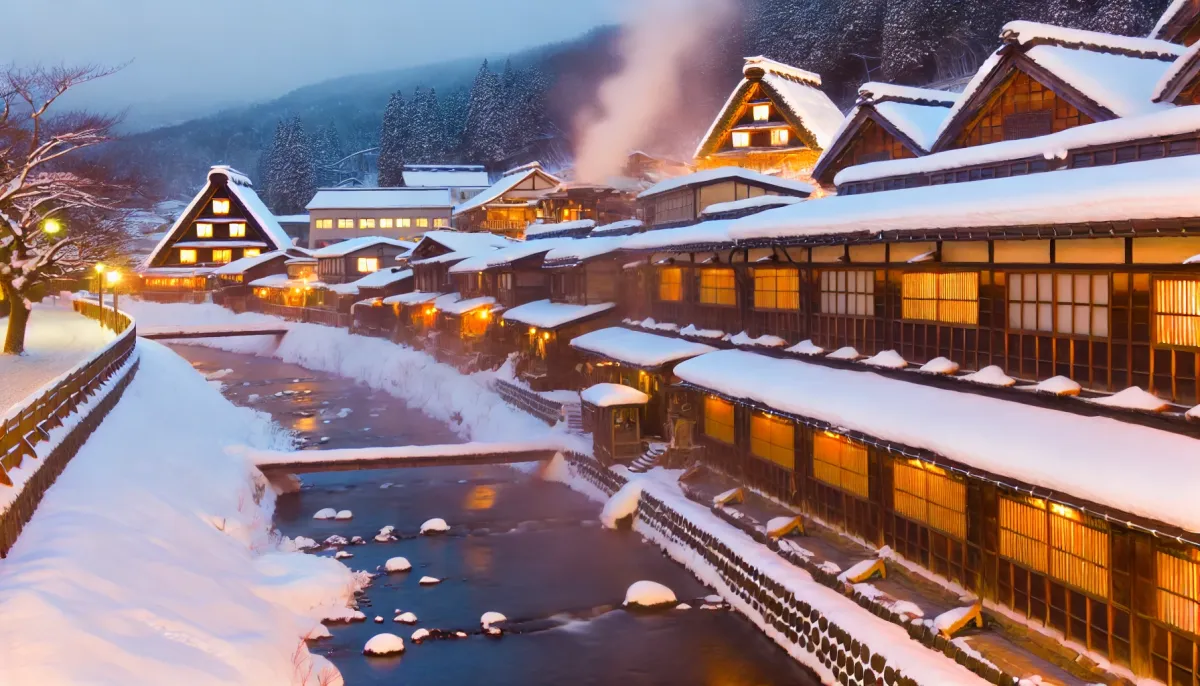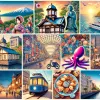Japan. The land of the rising sun, ancient temples, bustling cities, and...northeastern hidden gems? While Tokyo and Osaka often steal the spotlight, my recent 15-day road trip through Tohoku showed me a different side of Japan, a side brimming with untapped beauty, historical charm, and surprisingly, no lines! As an American backpacker who's explored my fair share of Asian cities, I can confidently say that Tohoku offers a unique experience you won't find in the usual tourist hubs. If you’re looking for an authentic, less crowded, and utterly enchanting Japanese adventure, then buckle up, because Tohoku is calling.
Why Choose Tohoku for your Japanese adventure?
For those unfamiliar, Tohoku comprises the six northernmost prefectures of Japan's main island, Honshu. This region is characterized by breathtaking natural landscapes, from rugged mountains and pristine lakes to picturesque coastlines. If you're tired of the hustle and bustle of major cities, Tohoku offers a refreshing change of pace. As an American used to wide-open spaces, I found driving through Tohoku a breeze. The roads are well-maintained, and the scenery is constantly changing, making every mile a visual treat.
But it wasn't just the open roads that captivated me. Tohoku offers all the shopping and dining experiences of a major city, but without the crowds. Remember those long lines for tax-free shopping in Tokyo? Forget about them! In Tohoku, you can stroll leisurely through department stores, browse local crafts, and enjoy delicious meals without having to queue up for hours.
Sendai: Where History Meets Modernity
My Tohoku adventure began in Sendai, the region's largest city. A perfect blend of historical significance and modern amenities, Sendai offers a taste of everything Tohoku has to offer. My first stop was Osaki Hachimangu Shrine, Sendai's only designated National Treasure. Unlike the typical red-painted shrines, Osaki Hachimangu is a striking black, adorned with gold lacquer. This unique aesthetic is a nod to the legendary feudal lord Date Masamune, known for his distinctive black armor and crescent moon crest. Gaming fans might recognize this iconic imagery!
Beyond the shrine, Sendai boasts a wealth of historical sites, including the ruins of Sendai Castle, offering glimpses into the city’s strategic past. And for those who enjoy a bit of retail therapy, Sendai Station is conveniently located next to a bustling shopping street where you can find everything from souvenirs to high-end fashion.
| Attraction | Description |
|---|---|
| Osaki Hachimangu | Sendai's only National Treasure, a striking black and gold shrine. |
| Sendai Castle Ruins | Remnants of a historic castle offering panoramic city views. |
| Shopping Street | Located near Sendai Station, perfect for souvenir hunting and retail therapy. |
A Taste of Sendai: Indulging in Gyutan (Beef Tongue)
No trip to Sendai is complete without sampling the city's culinary claim to fame: gyutan, or grilled beef tongue. I headed to a local favorite in the Ichibancho shopping arcade's basement, instantly drawn in by the tantalizing aroma of charcoal grilling. The star of the show was the thick-cut gyutan, twice as thick as anything I'd seen back home. Each bite was an explosion of flavor, juicy and tender with a perfectly charred exterior. Served with pickled vegetables, barley rice, and a comforting oxtail soup, it was a truly satisfying meal.
Luxurious Accommodation on a Budget
Forget cramped hotel rooms! My accommodation in Sendai was surprisingly spacious and modern, with large windows offering plenty of natural light. Located a short walk from both the gyutan restaurant and Sendai Station, it was the perfect base for exploring the city. And the best part? This luxurious stay, including a breakfast buffet featuring (yes, you guessed it!) more gyutan, cost around $80 a night. Try finding that kind of value in Tokyo!
Cruising Through Matsushima Bay: A Scenic Wonderland
My Tohoku journey continued to Matsushima Bay, one of Japan's three scenic wonders. This stunning bay is dotted with over 260 islands and islets, creating a breathtaking panorama. I opted for a 50-minute scenic cruise (around $12), which took me past iconic landmarks like Zenitaka Island, a favorite of Date Masamune, and Shōtō Island, known for its unique rock formations. Near the pier, I also visited Godaido Temple, a small temple perched on a tiny island, accessible by a short bridge with strategically placed gaps – a test of courage and a symbol of good luck for couples.
A Fox Lover’s Paradise and Natural Wonders
From Matsushima, I embarked on a “healing” day trip, immersing myself in nature and wildlife. The highlight was undoubtedly the Zao Fox Village, home to over 100 foxes of various breeds, including red foxes, platinum foxes, and arctic foxes. While some foxes roamed freely in a large enclosure, there was also a designated area where visitors could interact with tamer foxes, even holding them for a quick cuddle and photo opportunity. It was a truly unique and heartwarming experience.
My itinerary also included stops at Zao Okama Crater Lake, a stunning volcanic crater lake, Yōkawa Gorge, a picturesque valley carved by the Yōkawa River, and Chōrō Lake, known for its tranquil beauty.
Soaking in the Charm of Ginzan Onsen
After a day of exploring, I checked into my accommodation in Ginzan Onsen, a charming hot spring town nestled in the mountains. Famous for its traditional wooden inns lining the Ginzan River, the town looks like something out of a Studio Ghibli film. In fact, the iconic bathhouse from Spirited Away was inspired by one of Ginzan Onsen’s most famous ryokans, Notoya Ryokan. Securing a room at this highly sought-after inn requires booking months in advance, but the experience is well worth the effort. Imagine soaking in an open-air bath with views of a cascading waterfall or relaxing in a private cave bath fed by the source of the hot spring. The dining experience at Notoya was equally memorable, featuring local delicacies like simmered fish in sweet soy sauce and Yamagata beef hot pot.







